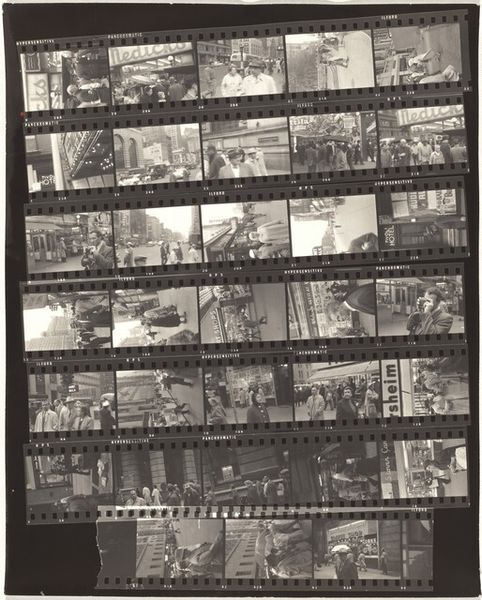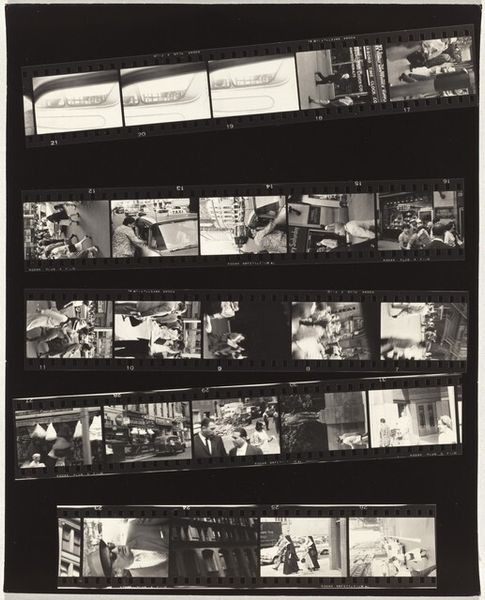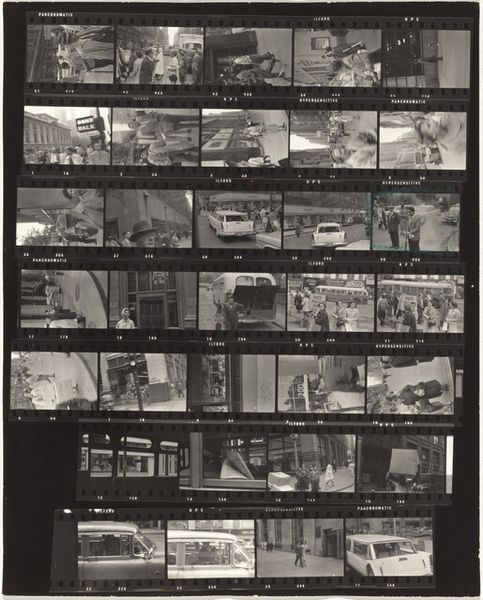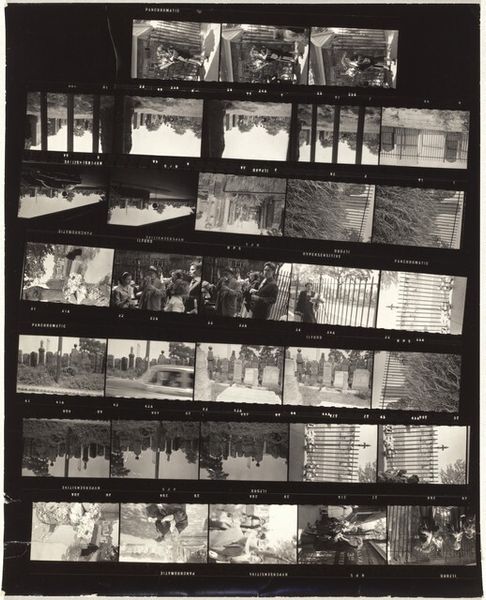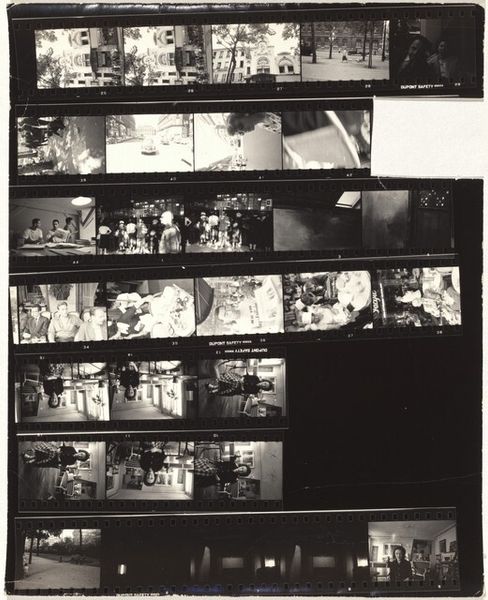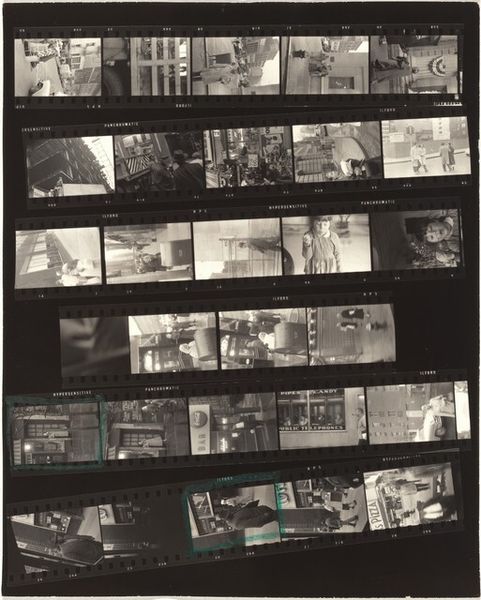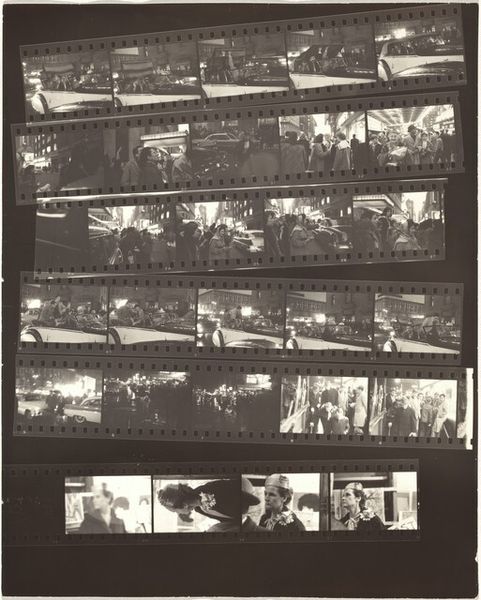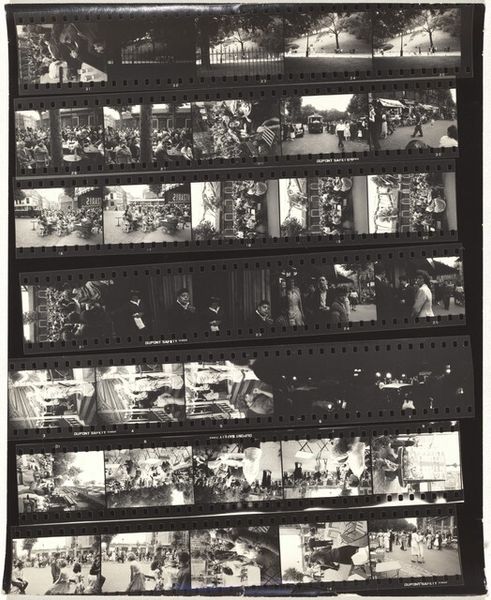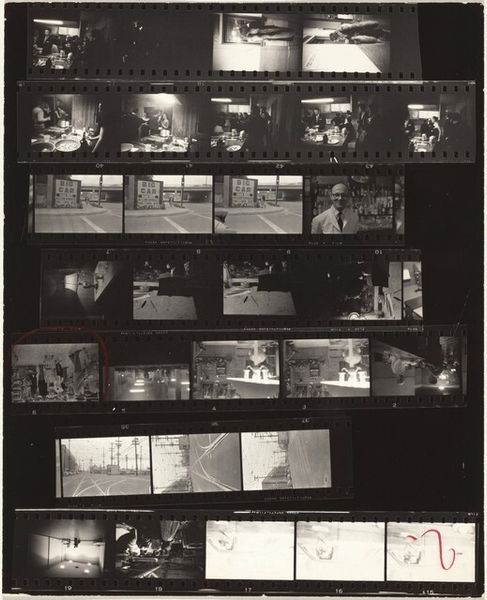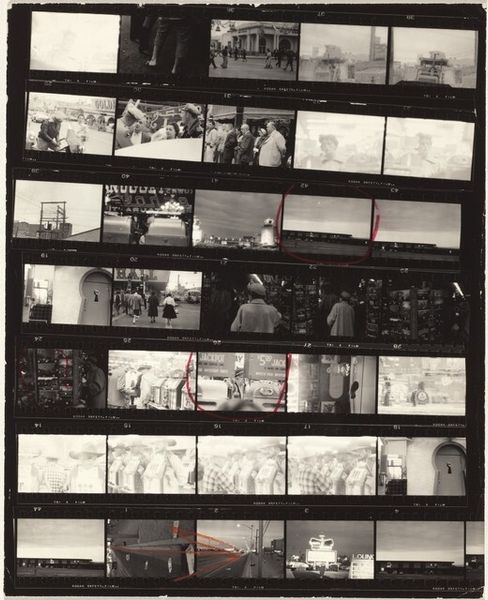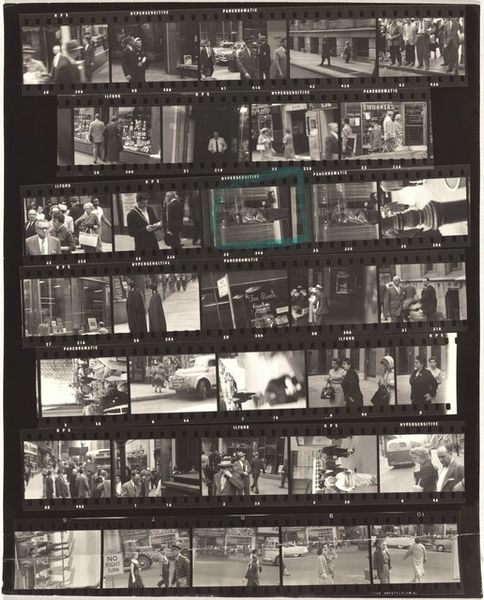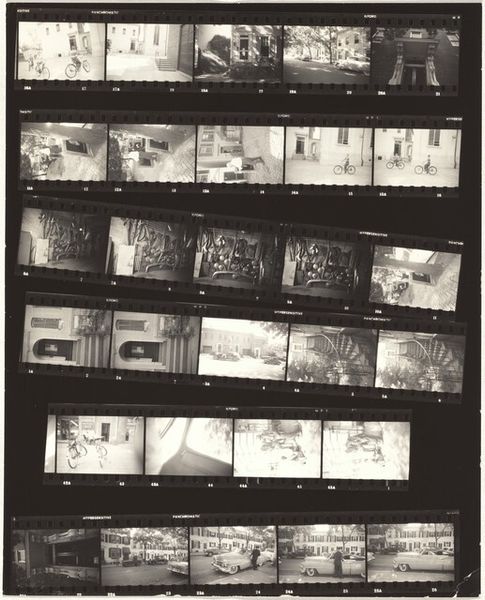
photography, gelatin-silver-print
#
film photography
#
landscape
#
archive photography
#
street-photography
#
photography
#
gelatin-silver-print
#
monochrome photography
#
cityscape
#
monochrome
Dimensions: overall: 25.3 x 20.5 cm (9 15/16 x 8 1/16 in.)
Copyright: National Gallery of Art: CC0 1.0
Curator: This gelatin silver print, titled "Guggenheim 583—San Francisco," was created around 1956 by Robert Frank. My initial impression is of organized chaos. It is a full frame from a film roll showing street scenes with cable cars, juxtaposed against what seems like an office or governmental agency. Editor: There's a striking duality here. The street views are open, capturing a city's pulse, while the interior shots seem confined, hinting at bureaucratic processes. What strikes me is how Frank places these scenes within the very structure of the filmstrip, each frame like a little window into different worlds co-existing. Curator: Exactly. And film, being a chronological medium, makes me think about time, and the relentless unfolding of daily life versus the stasis that institutions can sometimes represent. There is such a contrast between external and internal spaces—motion and stillness. What symbols do these juxtapositions unlock for you? Editor: The street scenes certainly symbolize freedom and dynamism, but they also invoke a sense of American nostalgia through the vintage cars and fashion. The indoor images of office spaces feel stark. There are figures bent over papers, each immersed in individual tasks yet bound by collective procedure. I see symbols of duty, maybe, or of societal cogs working diligently? Perhaps with just a touch of absurdity too? Curator: It also invokes questions about access, power, and representation. Street photography, in its own way, carries implicit social commentary as its cultural role; even with these rather pedestrian, quotidian scenes. And these may serve as reflections on the photographer and audience themselves, considering their roles in the urban fabric. It also reveals the documentary nature of the medium and its significance in reflecting social landscapes. What do you feel is conveyed by Frank showing us the complete film roll, in that material format? Editor: Showing the entire film roll, unedited, it’s as if Frank is offering us the raw data, inviting us to piece together the narrative ourselves. The material format really humanizes the work for me, with each visible frame edge serving as reminder of the photographer's physical presence, and deliberate decisions during its execution. There’s something very inviting in its almost candid approach. It speaks of observation, of fleeting moments caught in time, more than some grand, artistic statement, really. It almost reminds me to question how any meaning will be eventually constructed from seemingly unrelated images and occurrences in my life. Curator: Frank certainly invites us into the complexities of urban living with his signature touch. This film roll unveils fragments, moments, of lived reality to challenge how the modern landscape shapes society and how memories become enshrined in our collective consciousness. Editor: Indeed. Frank asks us to question our roles as observers, and invites us to create our own relationships, meanings, and associations, with these striking, juxtaposed moments he's managed to capture.
Comments
No comments
Be the first to comment and join the conversation on the ultimate creative platform.
